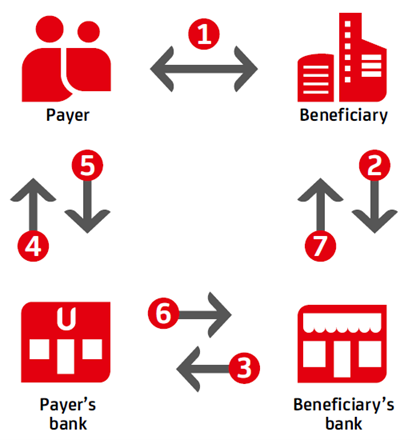The payment service enables transfers eligible for instant payment to be executed in just a few seconds, on any day of the year, any time of day. This means that transfers initiated over the weekend or after banking hours will also be executed instantly.
FOR PRIVATE INDIVIDUALS
FOR SMALL BUSINESSES AND CORPORATE CLIENTS
Where can I find additional information on instant payment?
You can find additional details on this website:
You can pay simply, even with a QR code, at merchants that provide the option, since
From 1 September 2024, UniCredit Bank’s mBanking and mBanking Business services also include qvik, an instant transfer initiated with a single data entry solution.
Starting from 06.03.2024, the request-to-pay service is available at UniCredit Bank




